Revealing the Art of Cabinetry
You’ve probably never given them a second thought, blending in the background while we pay little attention. We tend to take much for granted, don’t we?
“Are you talking about elves?”
No, I’m talking about cabinets.
“A cabinet is just that thing you put dishes in. They’re pretty much all the same“
That’s fair, but do you know anything beyond that?
“Um, they’re made by elves?”
That could be true, but let’s look at what we know…
Everything big and small has a history and a science all its own. Cabinets are no different. Instead of attributing this classic furniture design to mystery, let’s explore!
Basics & Designs
Cabinet construction is actually limited to two basic designs, framed and frameless. Although similar, they look different and accessibility varies between the two.
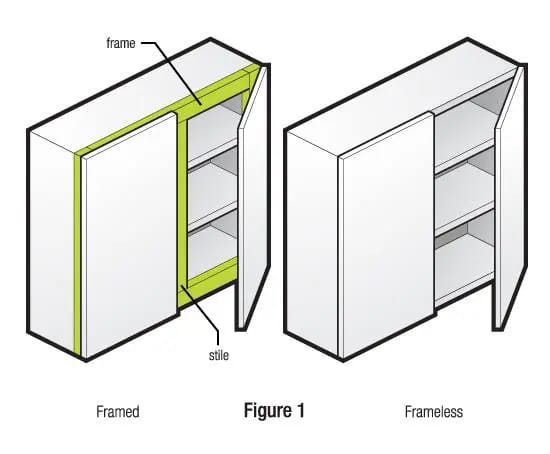 Framed Construction, also known as Face-Frame, is identified by the frame that outlines the front of a wood box (the cabinet itself). In a variety of ways, the frame separates the doors and drawers as well. The edge of the frame is aligned with the outside surface of the boxes’ sides and extends out forward only slightly. It is the more traditional of the two, and that look varies per the types of door overlay used. “Door overlay” refers to how much of the door or drawer lays over the face frame. A full-overlay completely covers the face frame. A partial overlay covers only a portion. The doors and drawers may also be made to fit perfectly within the framework – this is called a full-inset. The measurements of overlays will vary per manufacturer.
Framed Construction, also known as Face-Frame, is identified by the frame that outlines the front of a wood box (the cabinet itself). In a variety of ways, the frame separates the doors and drawers as well. The edge of the frame is aligned with the outside surface of the boxes’ sides and extends out forward only slightly. It is the more traditional of the two, and that look varies per the types of door overlay used. “Door overlay” refers to how much of the door or drawer lays over the face frame. A full-overlay completely covers the face frame. A partial overlay covers only a portion. The doors and drawers may also be made to fit perfectly within the framework – this is called a full-inset. The measurements of overlays will vary per manufacturer.
Frameless Cabinet Construction is easier to access than framed cabinets, as there is no frame blocking one’s reach. With its absence, a drawer’s capacity will be greater as it can extend horizontally from end-to-end. Known as a “European” design, the doors are generally full-overlay though they are available as full inset as well. In these cases, a veneer is used to protect the raw edges of the box.
Other Style Cabinets
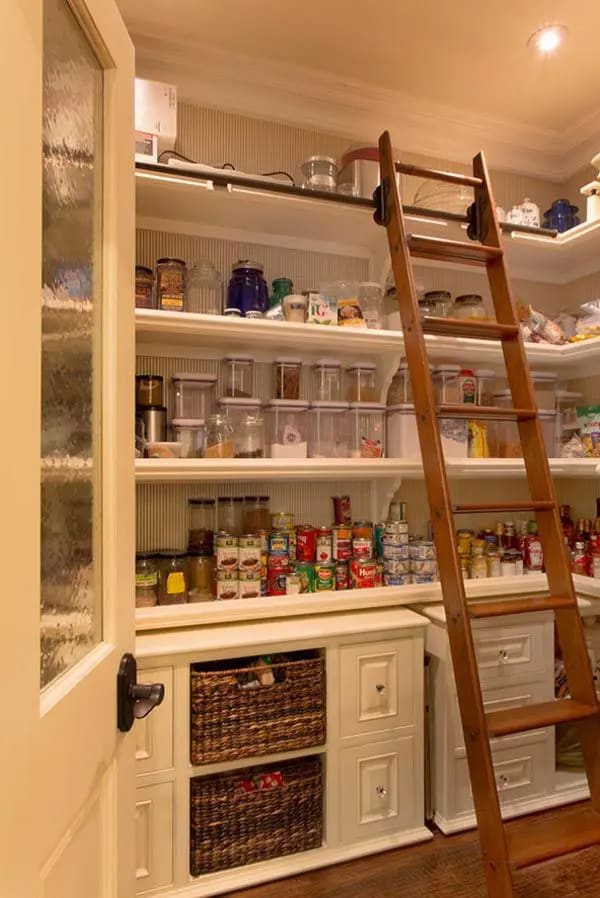
Beyond the aforementioned two are other styles based on the components that comprise a cabinet. Base cabinets are mounted to the floor and serve as support to countertops. The same concept applies to kitchen islands. Wall cabinets, meanwhile, are mounted against the wall above the countertops, refrigerator and oven. Tall cabinets, or pantries, are base cabinets with greater height. They may stand on their own, or be attached to others.
Construction and Materials
Wood is not the only substance used in kitchen cabinetry. Other materials are incorporated.
Solid wood is wood through and through, top to bottom, back to front. Separate panels and boards may be joined together, but as long as the entire assembly is composed of solid wood, that is how it is categorized. Be aware that this is different from “all wood” which we’ll detail shortly.
Engineered from wood particles, chips and adhesive, Particle Board is a fusion of its ingredients, creating boards and panels. It is the most cost-efficient and extremely common.
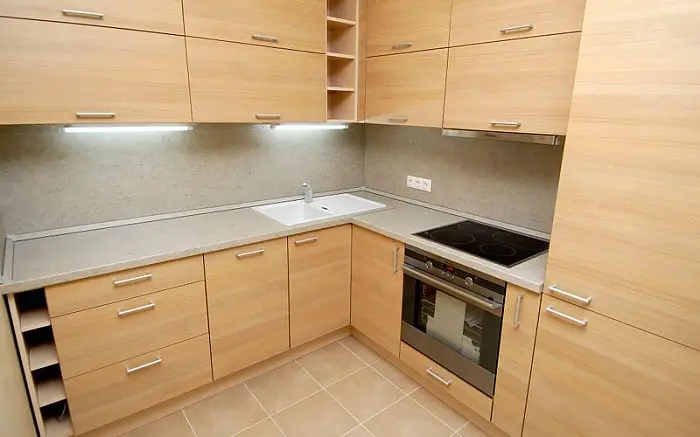
MDF (Medium Density Fiberboard) is also fabricated. By fusing wood fibers with an adhesive while under pressure, boards and panels are made. It is smoother and denser than particle board.
Among the array of other cabinet materials is another man-made product, the one most commonly known and used, actually. Plywood (or “all wood”) is composed of layers of wood that are fused by glue in a sandwich configuration. Often, the directions of the grain are alternated between the panels, serving to strengthen the final product. Plywood is typically sold as an upgrade.
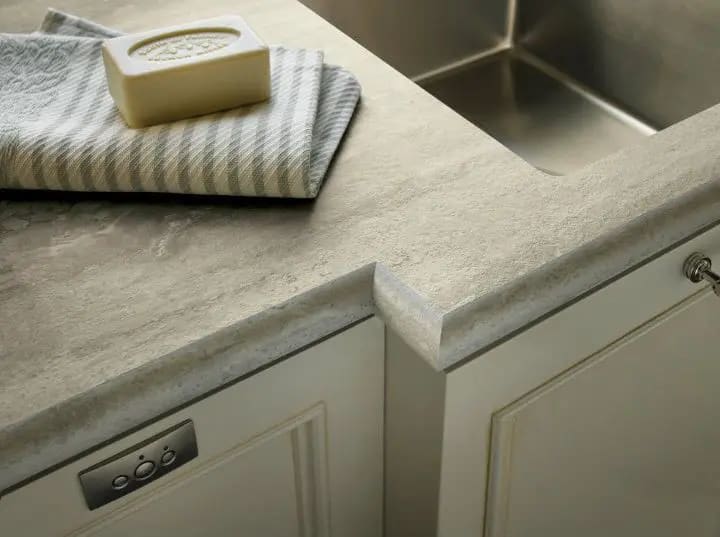
Plastic Laminate is fused with paper and plastic and is used to coat a cabinet’s surface, allowing it to be wiped down and cleaned easily. Also of plastic, melamine is a covering most popular for use with particle board and thermofoil is a vinyl film that is also used to protect the component surface of fabricated wood cabinets. Not nearly as common as the wood options, all-metal stainless steel cabinets are produced as well.
Construction Types
Methods of building cabinets will differ from each other. Not all manufacturers are the same. Plus, there are levels of quality reflected in their respective sticker prices.

When the ends of two boards are notched with ‘V’-shaped cutouts that interlock with each other, it is a form of “joinery”. In this case the connecting notches are called dovetails. Another joinery type is Mortise and Tenon. It features a post protruding from an end of a wood piece that fits tightly into a rectangular hole carved into another section of wood.
A Dado is a groove that’s cut into a board that allows the tight insertion of another board. In the case of a drawer bottom, a dado panel may be slid in and locked into grooves along all four sides, no glue necessary.
Another common joinery technique is the doweled joint that generally consists of pegs into holes connected by glue. A butt joint however, combines the flat ends of two pieces that have been ‘butted’ together by glue, screws or nails. This is partially why glue, screws, nails plus staples are considered unofficial joinery techniques unto their own. Often they are employed to reinforce an existing binding, but will contribute to less-than-sturdy construction when used individually.
Finishing Styles
The finishing process on wood products is perhaps the most important element to a cabinet’s completion. It is not only pleasing to the eye, it is also essential in protecting the wood from moisture and chemicals In fact, finishing is an art. A master can bring out the highlights of the background while focusing on the detail of the grain pattern, all protected by a level of gloss determined by the process. It is important to note that finishing does not apply to laminate or melamine surfaces, which provide finish protection inherent to their design.
A painted finish is among the most widely accepted. There are countless colors out there, though most users prefer to stick to a common shade of autumn.
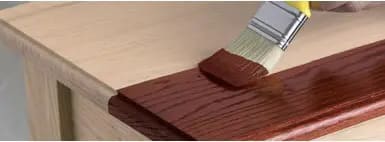
Wood Stain is a popular treatment that darkens the wood, accentuating its natural grain pattern. It is combined with a sealer to create a high gloss protectant.
Combining oil and resin, varnish becomes a protective coat over the wood and any existing surface treatment. Lacquer is a top-coat sealer, too. Applied over some of the aforementioned base stains, glaze is a semitransparent coating used to enhance the surface creating subtle visual highlights.
End Process
The finishing process for a cabinet may vary by manufacturer. A large producer may have a facility designed to finish multiple cabinets at once. They are more likely to provide consistent results. Smaller builders may finish each cab individually or outsource them. There are a number of steps inherent to the process such as preparing the wood, applying surface treatments and baking the finish.
Remember that the options you choose to incorporate into your project – from the time you start until it’s finished – will impact your final cost. Along the way, you’ll be frustrated to learn there is no shortage of upgrades to consider. You may decide to save a few bucks and install the cabinets yourself. It could very well be within your means. Otherwise, simply Google, ‘cabinet install’ and a number of local contractors – maybe elves – will appear.
Need help picking a contractor? click here
Need to know about contractor’s warranties? click here






